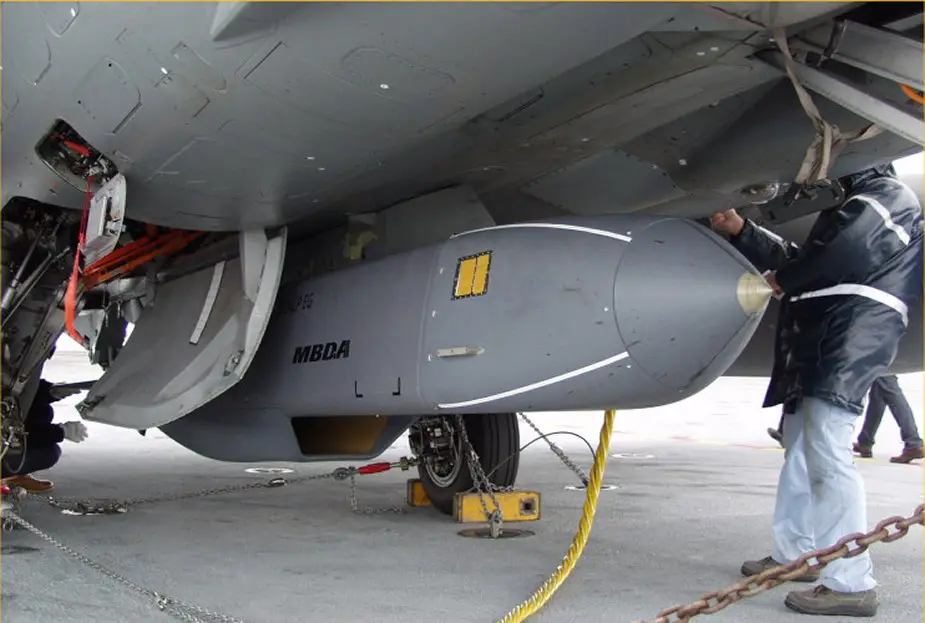Breaking news
France Announces Delivery of Long-Range Scalp Missiles to Ukraine at NATO Summit.
According to an article in the French newspaper Le Monde, on July 11, 2023, in Vilnius, Lithuania, French President Emmanuel Macron revealed a new decision by France: the delivery of long-range Scalp missiles to Ukraine. This announcement comes after the United Kingdom made a similar decision, providing guided air-to-ground missiles to Ukraine for long-distance strikes against fixed targets.
Follow Army Recognition on Google News at this link

Storm Shadow / SCALP report on aircraft carrier Charles de Gaulle (Picture source: MBDA )
President Macron emphasized France's commitment to support Ukraine and strengthen NATO unity upon his arrival at the summit. He stated, "We have decided to deliver new missiles capable of deep strikes to Ukraine. Today, what is important to us is to send a message of support to Ukraine and affirm NATO's unity."
France's decision to provide long-range Scalp missiles to Ukraine is significant as it marks a change in position. Until now, France had excluded this possibility due to concerns about the potential use of these missiles on Russian territory. However, the United Kingdom has already delivered Storm Shadows missiles to Ukraine.
This announcement enhances cooperation between France and Ukraine in the defense sector. Scalp long-range missiles are known for their precision and ability to reach distant targets, thus providing Ukraine with a greater capacity to strike strategic sites in Russia.
Since their introduction in 2003, air-to-ground Scalp missiles have become an essential tool in military operations. Developed jointly by France and the United Kingdom, these missiles have been widely used in various conflicts around the world.
The Scalp missiles were designed by Matra BAe Dynamics between 1994 and 2001 and are currently manufactured by MBDA. They have proven their effectiveness in several wars, including the Iraq War, the 2011 military intervention in Libya, the U.S.-led intervention in the Syrian civil war, the Yemeni civil war, and the Russo-Ukrainian War.
Weighing 1,300 kg (2,900 lb), the long-range missiles measure 5.1 m (16 ft 9 in) in length, 630 mm (25 in) in width, and 480 mm (19 in) in height. They have a wingspan of 3 m (9 ft 10 in). The warhead is equipped with a 450-kilogram (990 lb) multistage BROACH penetration warhead.
The Scalp missiles are powered by a Microturbo TRI 60-30 turbojet engine, providing a thrust of 5.4 kN (1,200 lbs). They can reach a maximum speed of Mach 0.95 (323 m/s; 1,060 ft/s) and have an operational range of 550 km (300 nautical miles; 340 miles).
These missiles feature an advanced guidance system including GPS, INS (inertial navigation system), IIR (infrared imaging), and TERPROM (terrain profile matching). The steering system consists of six tailplanes (four vertical and two horizontal).
Scalp missiles can be carried by various fighter aircraft, such as the Mirage 2000, Rafale, Su-24, Tornado, and Typhoon. Their versatility and ability to strike ground targets make them a valuable asset for the French and British air forces.
The Kremlin has already expressed its disagreement with the delivery of long-range French missiles to Ukraine. According to statements from the Kremlin spokesperson, Dmitri Peskov, this decision is seen as a "mistake" that will compel Russia to take "countermeasures" in the conflict in Ukraine.
The involvement of Scalp missiles in numerous conflicts demonstrates their effectiveness and strategic importance on the battlefield. With their extended range, precision, and penetrating power, these missiles continue to play a crucial role in modern military operations. France's decision to deliver these missiles sends a strong message about NATO's commitment to supporting Ukraine. As the NATO summit continues, it is likely that further measures will be discussed to strengthen collective defense.




























